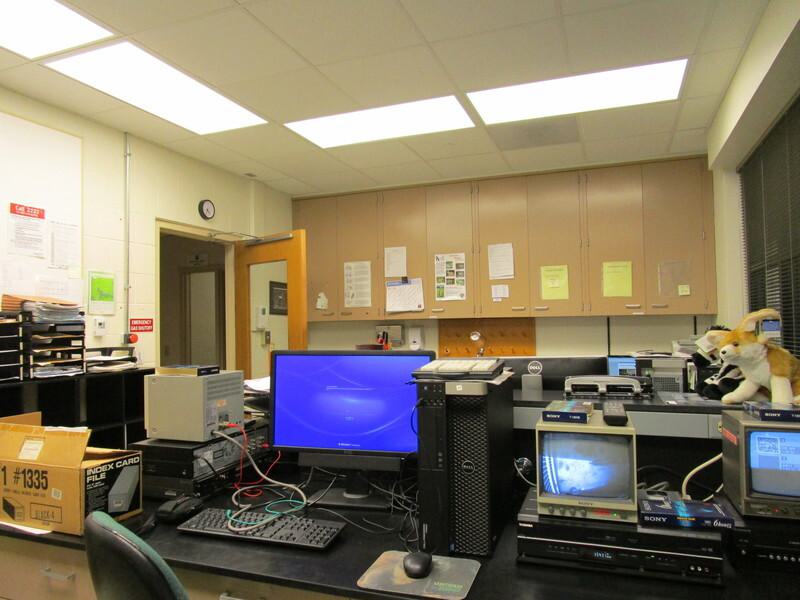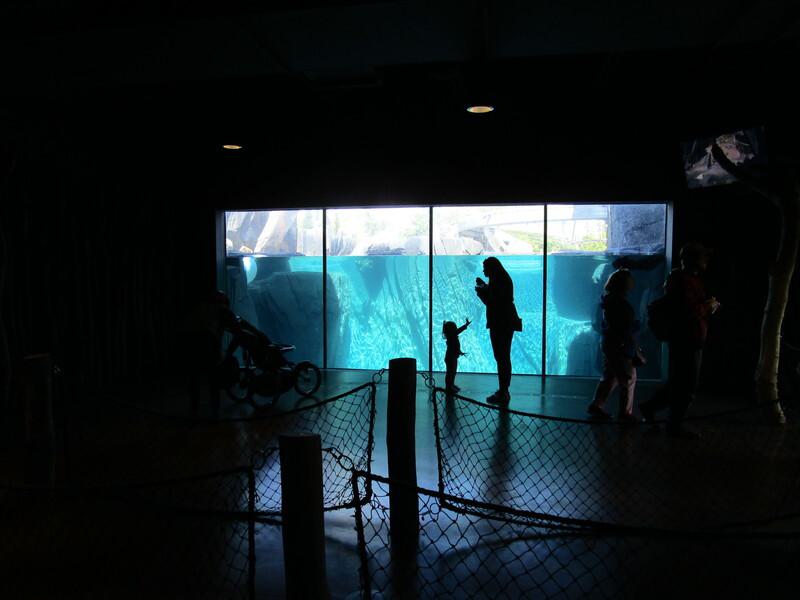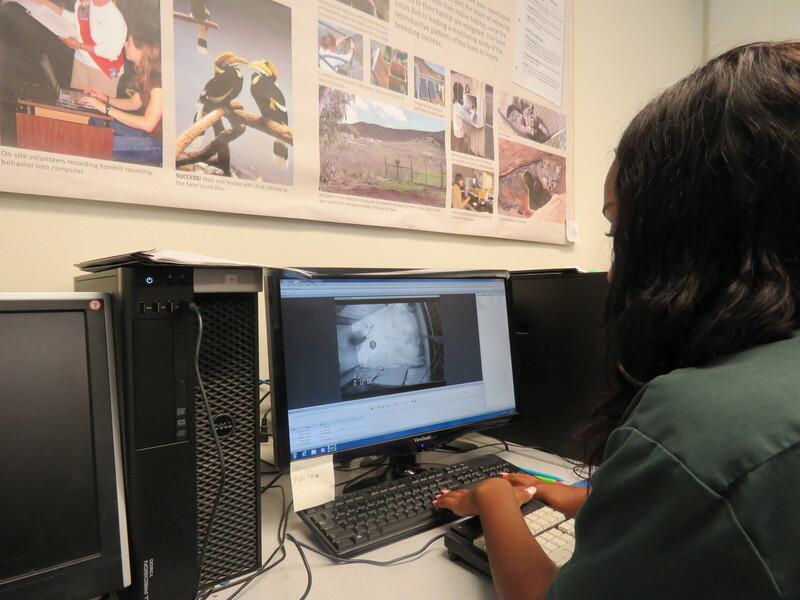
Over the past months, research interns again became a familiar sight in the Endangered Species Research Hospital. Their presence is a welcome change from last year, when many students abruptly ended their internships to return home due to the COVID-19 pandemic and the ensuing safety precautions and university shutdowns. In a normal season, we accept two or more Behavior Research interns and interns in the Endocrine and Reproductive Sciences labs. Having these individuals on site was not an option for 2020, and the Zoo had to rethink how we would host interns and perform research.
Luckily, the Reproductive and Behavioral Sciences department already used many tools to gather data when circumstances made it difficult to rely on live observers, like when we studied nocturnal animals, animal behavior in behind-the-scenes areas or animals that were likely to adjust behaviors when humans were present. We have a collection of cameras and environmental loggers for these circumstances. Thus, although live observations were paused in 2020, our previous investments in data collection technology allowed many projects to either begin or continue.
Additionally, the closure of the Zoo gave members of our research team the opportunity to perform a project that would have been otherwise impossible. Animal Welfare Scientist Dr. Ashley Edes collected data on several animals to examine how they moved around their habitats while guests were absent for long periods of time. While we cannot definitively say that animals were "missing" guests, once we are finished reviewing this data, we will know if the presence of guests affected which parts of their habitats animals used. This study will answer the question of whether our animals moved closer to visitor walkways and viewing areas when no guests were present. Insights about how animals perceive their environments and the people who visit them enable us to better understand their behavioral and psychological needs as our Zoo continues to raise the bar for animal care.

Although not physically at the Zoo, our interns did a host of essential projects for Zoo research by accessing Zoo computers while working remotely. In addition to watching video for the Effects of Guest Presence on Habitat Use study, they supported many projects touching a number of different areas. Some scored videos of vipers that were behind the scenes in the Herpetarium and recorded how often the snakes flicked (extended and quickly retracted) their tongues in a certain amount of time, helping the Zoo investigate whether vipers flick their tongues more often in response to a disturbed environment.
Another project that interns supported remotely was comparing the frequency and duration that Bali mynahs spend either actively in contact or in proximity with enrichment items, furthering our evidence of the usefulness of progressively challenging enrichment and how they can help retain interest in animals over more regularly introduced, static enrichments. In another assignment, interns helped collect activity budgets (how long an animal spends performing certain behaviors and their variety) from three species of primates in the Primate House before the construction of Primate Canopy Trails. This data will be one part of a larger project determining the effect of the new habitat on the primates' activities.
Happily, we were able to not only support our regular intern programs but also host a graduate student who completed and submitted their thesis on courtship behaviors of tawny frogmouths all while working from home. While the interns gave the Zoo important support in research development, we did our best to provide them with valuable experiences. During a normal internship, students would interact with our staff in-person every day and would have opportunities to attend intern-only events like behind-the-scenes tours. Though that was not possible last year, we tried to keep interns feeling connected to the department by hosting journal clubs that covered topics like cognitive enrichment and how animal wellbeing is assessed.

In summer 2021, we welcomed a small number of interns back on grounds as we took tentative steps to collect live behavioral data from rhinos and monkeys. Even today, our labs are not nearly as full as they used to be, and we carefully plan how and where our interns work so that they do not crowd each other. A Plexiglas divider now splits the Behavior lab in half, and the room that used to hold up to 10 people now accommodates two in order to keep everyone appropriately spaced.
While remote work was able to get us through the past year and a half, we eagerly anticipate the day we can safely accept more interns again. We are grateful to the Zoo's dedicated Technology Services team for helping guide our interns through the steps needed to connect to the Zoo. While it is doubtful we will return to an entirely remote intern workforce, off-site students might be a good complement to in-person teams. We look forward to publishing and discussing the results of the studies that were underway during this unusual period in time, and we also hope that our efforts were able to provide a valuable experience to our 2020 and 2021 interns.

